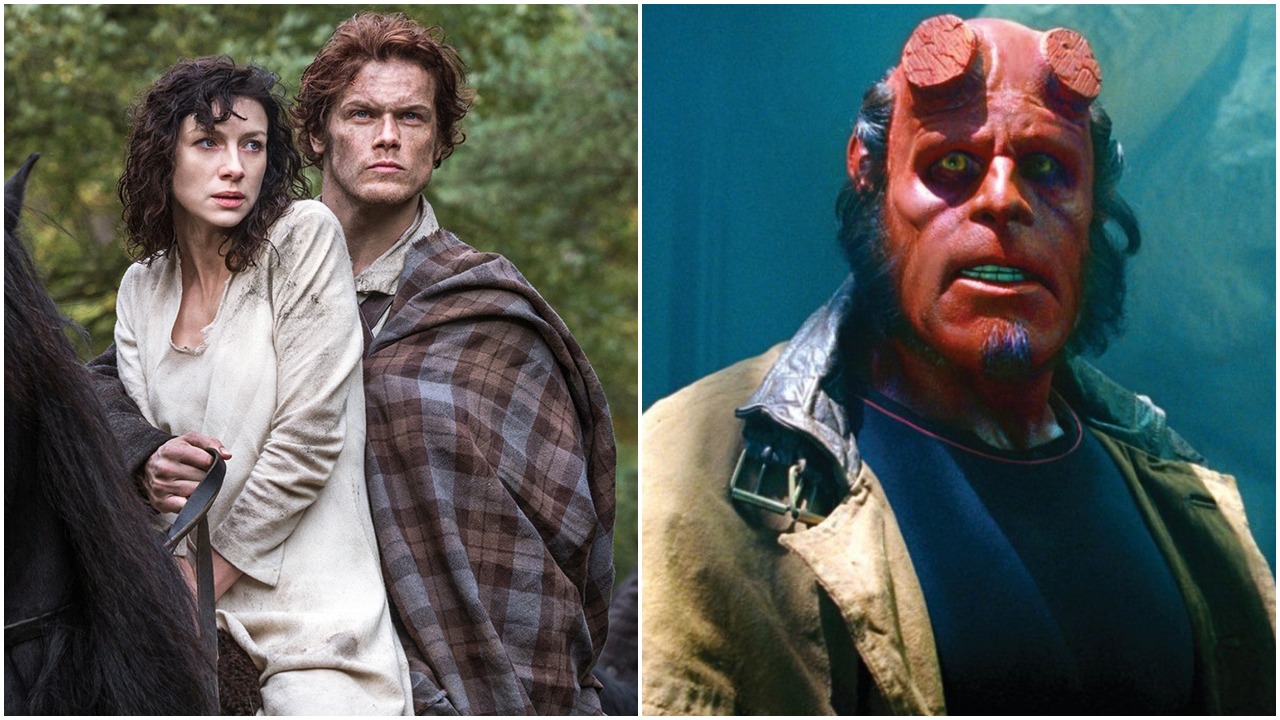The Authors of Outlander, The Passage and Hellboy on the Truth About Adaptations

As a transformative fan, adaptations are my JAM. In my eyes, the best adaptations marry something wholly original while retaining the source text’s core; that The Handmaiden is, in my opinion, one of the best adaptations ever made, should tell a little about my philosophy.
So I was thrilled when I saw that The Studio @ NYCC, a corner of New York Comic-Con devoted to industry talks (as a Dragon*Con baby who loves the track system, well done, NYCC, well done), was hosting a panel on adaptations from the perspective of three authors whose works have high-profile adaptations.
Moderated by Kelle Long, it featured Diana Gabaldon, Justin Cronin, and Mike Mignola, whose work needs no introduction (but consist of Outlander, The Passage, and Hellboy, for those joining us). The panel was called “From Pages to Pictures.”
Without further ado, here are three takeaways from the point of view of creators who have watched their signature works adapted by other teams.
Adaptation Can Be the Point
Sneaking in through the back out of breath (“cheers” to the MTA, maker of the worst decisions during one of the busiest weekends of the New York nerd calendar), I caught Mignola in the middle of explaining a unique quirk of adapting comics that books rarely have to deal with: publication with an eye on selling the film and television rights rather than making a profit off of the comics. And those rights need never actually result in a production, since the purchase of the rights is the point.
Cronin chimed in that he never thought, while writing the darn thing, that The Passage would sell its rights so soon; the process went so quickly that he agreed because he needed to put food on the table. I’d like to take a minute to thank Cronin for being refreshingly upfront and clear about the financial realities of the writing lifestyle; it’s not something that’s commonly addressed in an environment like this unless it’s a panel aimed at working writers, so kudos.
So when someone tells you that the book or comic will always be better than the television show or movie, just remember that sometimes that television show or movie is the reason the book or comic was published in the first place.
The Control An Author Doesn’t Have
It’s easy to think of the original creators of a book having complete creative control over adaptations of their work. Easy, but incorrect.
I mean, it is rumored that the reason Disney may have missed out on acquiring the rights to a Harry Potter land in one of their parks is because J.K. Rowling wanted full creative control over the endeavor. But Rowling is a unique case (who should be using her immense power to, I don’t know, remove alleged abusers from her film franchise???).
But Mignola shared that working on preproduction for Del Toro’s Hellboy adaptations felt a little surreal, especially when choices that were previously his and his alone to make now involved a committee. When three months of his work barely made it onscreen, he was left wondering if his time would have better spent on his own projects.
Of course, all of this is tempered by the fact that the authors are more and more visible on social media. Anne Rice railing publicly against the casting of Tom Cruise in Interview with the Vampire is something to be avoided; you don’t want to alienate the baked-in audience that you are presumably courting. (Even though she was so wrong; Cruise turns in a career-best performance in that film and you know I’m right. In fact, she took out newspaper ads to discuss how she was happily wrong.)
Gabaldon, Cronin, and Mignola all agreed that production teams do want the authors to be happy and visibly so, but the ultimate decisions don’t lie with them.
Every Reading is an Adaptation (Especially the Adaptations)
When Long asked if there was anything in their works that they’d visualized so differently from the adaptation, a breezy Cronin cheerfully took the question in another direction. He shared his practice for being able to sketch out a character without getting in the reader’s way: share three details, usually hair, eye color, and clothing, and then move on. If you’re dictating to the reader what they should be seeing… then you’re condescending to them.
And don’t get too attached. Cronin talked about the team at Fox coming back to him to ask to change a character’s gender and to cast Saniyya Sidney as Amy Bellafonte. And he was 100% fine with it, because he sees physical sketches as unnecessary set dressing (though, of course, he pointed out that sometimes backstories need to be tweaked a little to accommodate such changes, which were also 100% fine by him).
I, of course, lit up, because I’m a reader-response theorist by training, further reinforced by my autodidactic adventures in media studies. And after Catherine Hardwick revealed Stephenie Myers thwarted attempts to diversify the casting for Twilight, it’s refreshing to find a successful author who couldn’t give a hoot and in fact is very encouraging of doing so.
No adaptation, as Mignola pointed out, replaces the original, so why not do something different?
Want more stories like this? Become a subscriber and support the site!
—The Mary Sue has a strict comment policy that forbids, but is not limited to, personal insults toward anyone, hate speech, and trolling.—
Have a tip we should know? tips@themarysue.com